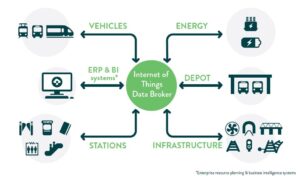In 2025, the logistics and shipment industry is undergoing a profound transformation driven by the integration of cutting-edge technologies such as the Internet of Things (IoT) and Global Positioning System (GPS). These technologies are revolutionizing shipment communication by enabling real-time visibility, enhanced security, predictive analytics, and seamless multi-channel communication. The result is a smarter, safer, and more efficient shipping ecosystem that benefits businesses, delivery partners, and end consumers alike.

Real-time tracking and monitoring
- At the core of this transformation is real-time tracking and monitoring, which has been dramatically enhanced by IoT devices coupled with GPS technology. IoT sensors embedded in shipments or mounted on packaging provide continuous data streams on critical parameters such as location, temperature, humidity, vibration, and even tampering attempts. GPS technology pinpoints the exact position of the shipment at any moment, allowing stakeholders to monitor the progress of deliveries with unprecedented precision. Unlike traditional barcode scanning systems that provide location updates only at checkpoints, IoT-enabled GPS devices send constant updates, ensuring shipments are never out of sight or forgotten. This continuous visibility minimizes the risks of lost, stolen, or damaged goods—especially for fragile and high-value electronics, pharmaceuticals, or perishables where conditions must be strictly maintained.
Environmental condition monitoring
- In addition to location tracking, the integration of IoT sensors enables environmental condition monitoring during transit. For temperature-sensitive shipments, smart sensors track and report real-time temperature and humidity levels, alerting logistics teams immediately when conditions deviate from preset thresholds. This capability prevents spoilage or damage by enabling corrective actions mid-journey, such as rerouting packages to climate-controlled facilities or alerting handlers to take precautionary steps. The enhanced environmental monitoring powered by IoT is a game-changer for industries heavily reliant on stringent supply chain controls.
predictive analytics powered by artificial intelligence (AI)
- Another critical advancement facilitated by IoT and GPS technologies in shipment communication is the rise of predictive analytics powered by artificial intelligence (AI). Using the vast volumes of data collected from IoT sensors, GPS tracking, and historical shipment records, AI algorithms can predict potential delays caused by traffic congestion, weather disruptions, or operational bottlenecks. These insights empower logistics managers to proactively reroute trucks, reschedule deliveries, or deploy backup resources to avoid delays before they happen. Predictive analytics also optimize fuel consumption and driver efficiency by determining the fastest and safest delivery routes. Consequently, shipments arrive on time more consistently, reducing customer frustration and improving overall service reliability.
Multi-channel communication platforms
- Multi-channel communication platformsare another pillar in the modern shipment communication framework. Through mobile apps, SMS alerts, email notifications, and IoT-enabled devices such as smartwatches and wearable tech for delivery personnel, stakeholders receive constant updates about shipment status. Customers gain exact delivery time windows, allowing them to plan accordingly and reducing missed deliveries or theft risks. When delivering high-value gadgets, companies increasingly use secure handoff confirmation methods, incorporating electronic signatures or photographic evidence to validate receipt. These communication channels enhance transparency and build greater trust between service providers and recipients.
Fleet management and inventory control
- From an operational perspective, IoT and GPS data also enhance fleet management and inventory control. IoT-enabled vehicles provide real-time diagnostics including fuel levels, engine health, driver behavior, and route adherence. Logistics companies can monitor fleet condition proactively, schedule maintenance timely to reduce breakdowns, and ensure safety compliance. This operational insight results in fewer delays and lower costs. Simultaneously, smart warehouse shelves and automated inventory systems track stock movements in real-time using IoT, accelerating order fulfillment and minimizing human errors. The synergy of IoT and GPS in warehouse and delivery operations drastically improves supply chain responsiveness and scalability.
Data privacy and security
- Amidst these technological gains, companies in 2025 place strong emphasis on data privacy and security in shipment communication systems. Since real-time tracking involves sharing sensitive location and personal information, ensuring compliance with global data protection regulations such as GDPR and CCPA is critical. Organizations use encryption, secure data storage, and user consent management to protect customer data and build trust. Privacy-conscious designs offer customers control over what shipment information is shared and with whom, fostering transparency in the digital logistics landscape.
Integration of multi-carrier and cross-platform tracking solutions
- A notable trend enabled by IoT and GPS is the integration of multi-carrier and cross-platform tracking solutions. This development allows customers and businesses to monitor shipments managed by multiple logistics providers through a single unified interface. It drastically reduces confusion, enhances convenience, and improves overall user experience, particularly for international shipments crossing complex supply chain networks. Cross-platform integrations also enable advanced analytics that combine data across carriers for holistic insights and optimized operations.
Leave a Reply